The Wright brothers and the dream of flying
I’ve lost most of the day to unexpected research and one of the fascinating items that I discovered was the Air Force Historical Research Agency and their amazing photo collection. This collection includes a thousand old photographs of flight! I was drawn in by some of these of the Wright brothers and their aircraft, many of which I have not seen before. These are my favourites.
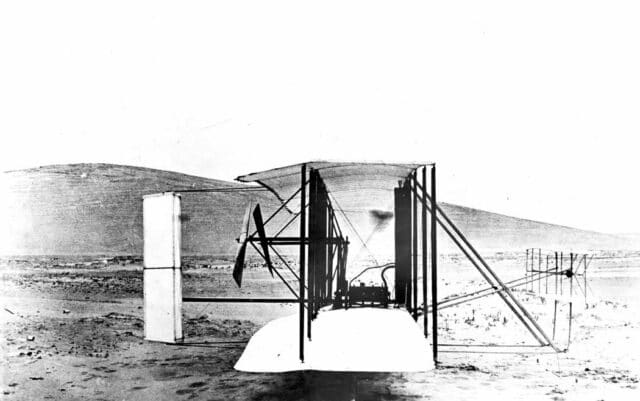
Kitty Hawk, North Carolina was where it all began, where the Wright Brothers built their first plane which they called simply Flyer. On the 17th of December 1903, Flyer made its first flight, just twelve seconds. The next few flights that day were more successful, with the longest flight travelling 852 feet in 59 seconds. This is the first successful flight of a heavier-than-air flying machine.
There’s a very interesting side-story about how the Wright Flyer came to be displayed at the Science Museum in London, the direct result of a campaign by the Smithsonian to highlight the late Dr Samuel P Langley contributions towards powered flight over that of the Wright Brothers.
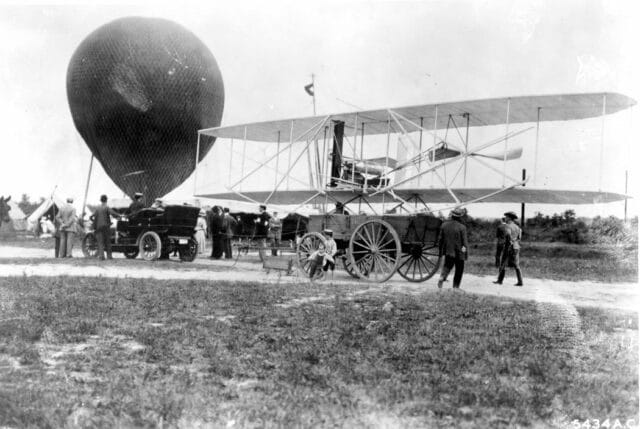
In 1908, the US Army announced their plans to buy flying machines. Orville Wright travelled to Fort Myer, Virginia to demonstrate the capabilities of their aircraft, with the only slightly more evocative name of the Wright Aeroplane.
From the National Archives article The United States Army Buys Its First Aeroplane, 1909
[The United States Army] required that the flying machine should have a speed of 36 miles per hour (with penalties for speeds below that and bonuses for speeds above 40 miles per hour, up to 44 miles per hour); that it be capable of carrying two people, whose combined weight would equal about 350 pounds, in addition to sufficient fuel for a non-stop flight of 125 miles; that it be controllable in flight in any direction; that it be capable of an endurance flight of one hour; and that it land at its take-off point without damage so that the flight could be resumed immediately
I never much thought about the logistics of early aircraft; the photograph really made me consider the challenge of attempting to move such a massive and fragile piece of machinery.
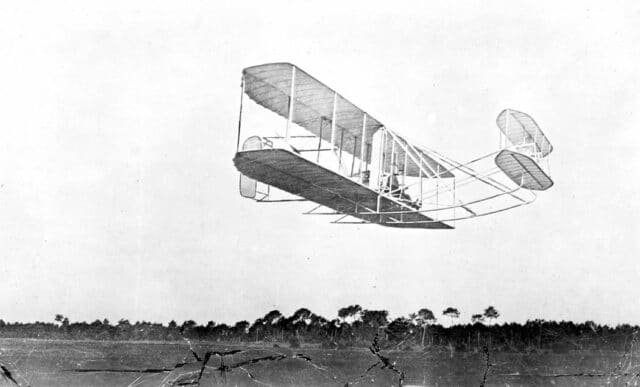
Meanwhile, Wilbur Wright was showing off their aircraft in France in August and September of 1908. These demonstration flights were the first that the general public had seen of what the Wright Brothers had achieved. The Wright Aeroplane flew further and under better control than any of the other aircraft at Le Mans.
From the somewhat obnoxiously titled American Heritage article How Wilbur Wright Taught Europe to Fly
The French did not believe that the Wrights had been power-flying since 1903, so that Wilbur was accused of bluffing and taunted by the press. Then on August 8, 1908, at the little provincial racecourse of Hunaudières, near Le Mans, the skeptics of press, public, and professional aviation sat waiting and gossiping in the makeshift grandstand. A few minutes later they were on their feet staring in amazed disbelief as Wilbur took off, banked, flew round in two graceful circuits, and came in to land. The spectators’ words tell their own story: “a revelation”; “we are as children compared with the Wrights”; “a new era in mechanical flight has commenced”; “ce ne fût pas un succés, ce fût un triomphe.” And so it went.
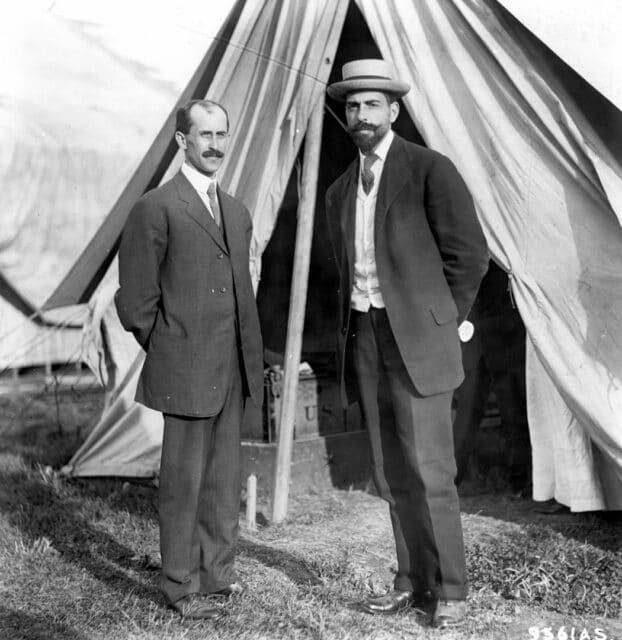
Orville Wright flew the demonstration flight at Fort Myer and continued to fly the Wright Aeroplane over the next two weeks. During this demonstration, he set a world record for flight endurance with a passenger, flying nine minutes and six and a third seconds with Army Major George O. Squier on board. Five days later, Orville was the pilot of the first military aviation crash: US Army Lieutenant Thomas Selfridge was the first person killed in a plane crash when the propeller broke at a height of 75 feet. Orville was seriously injured.
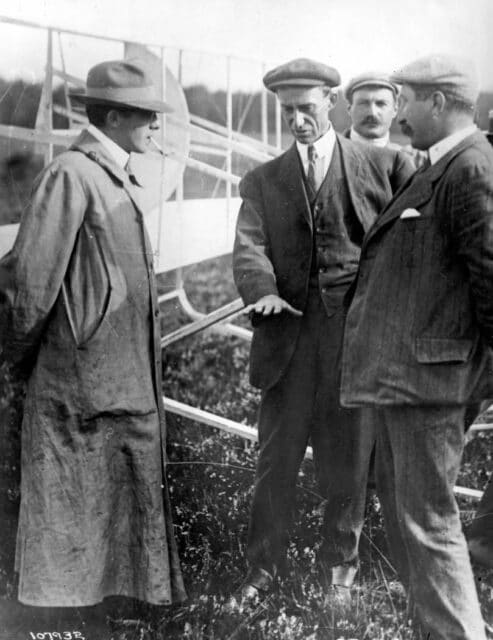
Although “teaching Europe to fly” is a misnomer, it is certainly true that the joint demonstrations by the Wright Brothers in the US and in France had taken the world by storm. Both brothers set aviation records and silenced the sceptics: the era of powered flight had begun.
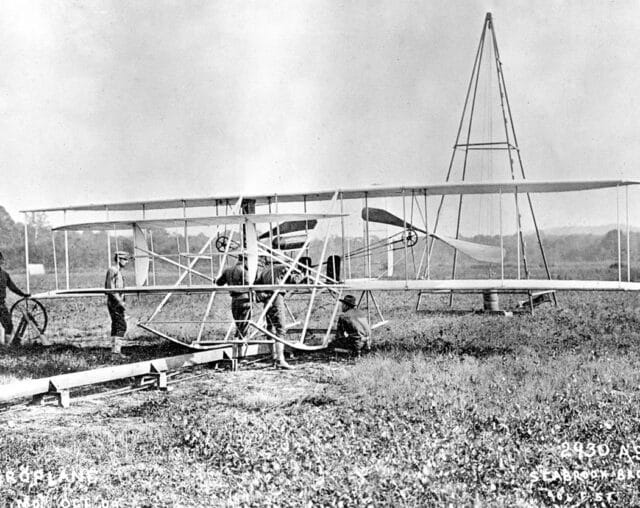
The Wright Brothers began offering flight instruction at College Park in Maryland. They had two Wright Model B aircraft for military training and continued to work on their designs here. College Park Airport now claims the position of the world’s oldest continually operated airport.
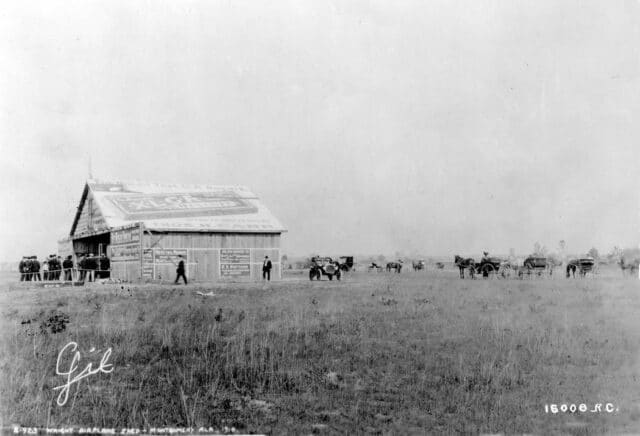
The Brothers started touring to promote their aircraft. They soon realised that they needed to train pilots who could fly in exhibitions. In 1910, the brothers established the first civilian flying school in the US, on an abandoned cotton plantation in Montgomery, Alabama. The hangar, known as an “airplane shed” at the time, was part of the deal.
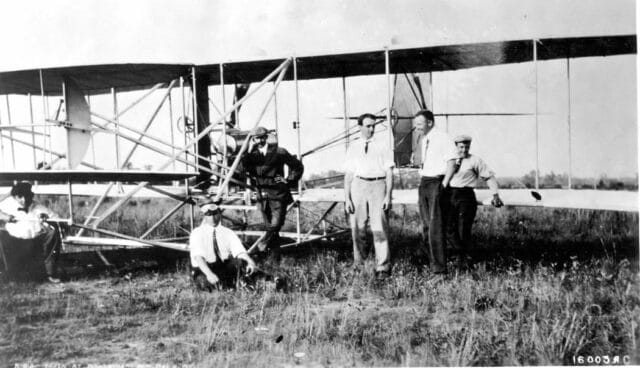
According to the Illustrated History of Maxwell Air Force Base, the school only trained two pilots. This may be an exaggeration (I see at least three wannabe-pilots in the photo), but certainly the school only lasted a couple of months. The first flight at Montgomery was on the 26th of March and the final flight on the 26th of May.
From the Encyclopedia of Alabama’s entry on Wright Brothers Flying School
In one instance, stiff breezes caused Brookins to curtail flying activities until late on the night of May 25. The first flight occurred at about 10:30 p.m., and others followed at regular intervals well into the morning, the first recorded night flights in history.
Flight training continued the next day until a propeller chain broke and the plane was again grounded. With the school scheduled to close the following week, the Wrights decided not to fix the aircraft. Instead, they told the students to pack up the plane and ship it to Indianapolis, Indiana, for the first exhibition flights. With the exception of an occasional barnstormer, flying activities essentially disappeared in Alabama until World War I brought aviation back to the site that then became Maxwell Field.
Still, I love that they look not a lot different from a group of flying school students today.
I hope you enjoyed the photos and the stories attached to them, a very brief tour of how the Wright Brother’s dream of power flight became a reality.








I enjoyed reading the late David McCullough’s book on this subject. It also describes the role of their sister Katharine in their enterprise. All very fascinating.
I know nothing of their sister! Thank you for the recommend!
When John Prine wrote his classic song Angel from Montgomery, he just came up with the chorus and title based around the character in the song, little did he know that the first human angels were taught to fly precisely from Montgomery. Or was this fact somewhere deep in his subconscious mind?
https://americansongwriter.com/john-prine-angel-from-montgomery-behind-the-song/